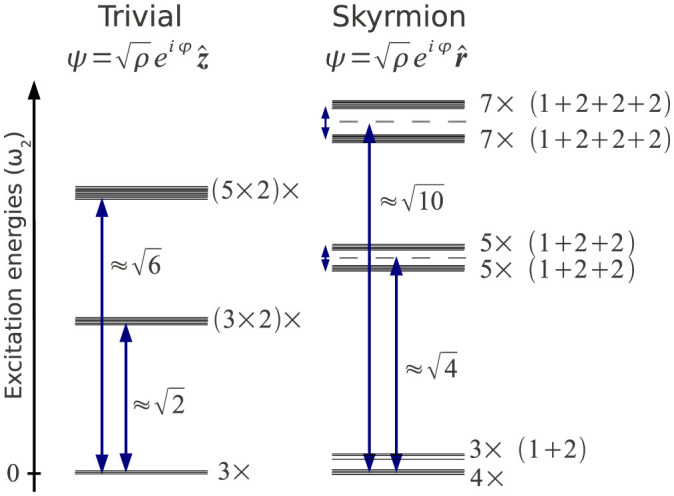Figure 3. Excitation spectrum.

The left (right) panel visualizes the low energy part of the excitation spectrum above the trivial (skyrmion) ground states in units of ω2 = 1/(mRξ2), with the magnetic healing length  . Due to the rotational symmetry of the trivial state around
. Due to the rotational symmetry of the trivial state around  , each excited state has a 2-fold spin degeneracy in addition to the (2l + 1)-fold orbital degeneracy. In contrast, spin degeneracy splits, and only orbital (rotational) degeneracies survive in the skyrmion sector. The trivial and skyrmion states exhibit different number of zero modes (Goldstone modes) as well. Apart from the phase degree of freedom, only two zero modes exist in the trivial case, since rotations around
, each excited state has a 2-fold spin degeneracy in addition to the (2l + 1)-fold orbital degeneracy. In contrast, spin degeneracy splits, and only orbital (rotational) degeneracies survive in the skyrmion sector. The trivial and skyrmion states exhibit different number of zero modes (Goldstone modes) as well. Apart from the phase degree of freedom, only two zero modes exist in the trivial case, since rotations around  in configuration space leave this state invariant. In the skyrmion state, however, the number of zero modes increases by one, since rotations around all three spin axes provide a zero mode on top of the phase mode.
in configuration space leave this state invariant. In the skyrmion state, however, the number of zero modes increases by one, since rotations around all three spin axes provide a zero mode on top of the phase mode.
